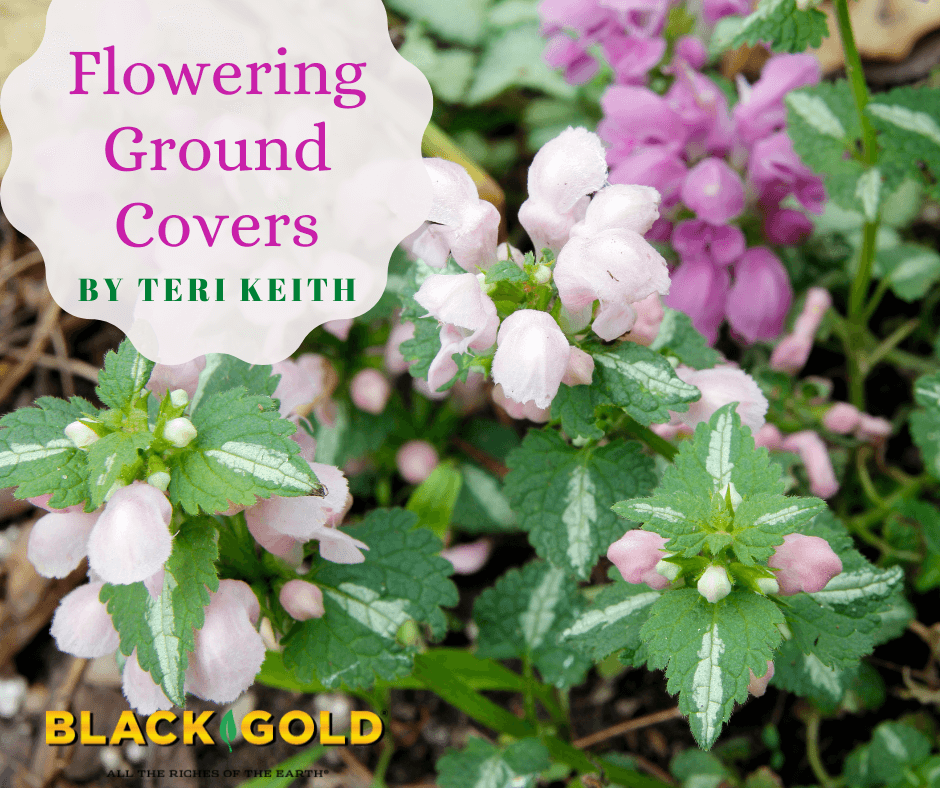
If you have a garden area that needs filling in, whether along a slope, between plants, or beside stone steps or rocky retaining walls, there are many beautiful perennial groundcovers for the job. They range from ones that do well in hot, dry areas to others that like moist shade. I have chosen groundcovers that have beautiful leaves as well as flowers, which do not overwhelm surrounding plants and are easy to grow.
Flowering Groundcovers for Full to Partial Shade
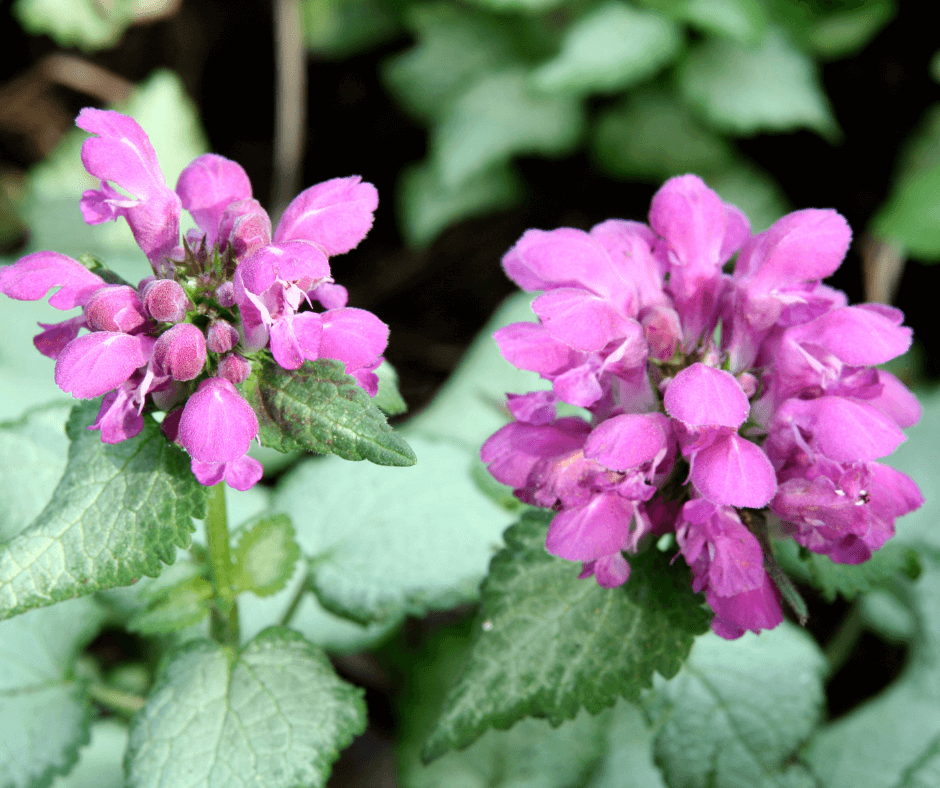
Spotted Deadnettle (Lamium maculatum, Zones 3-8): One of my favorites for shade is named spotted deadnettle, or simply deadnettle, even though it has no prickly nettles. I have had several varieties in my shade garden for years. The early summer flower stalks are about 7 inches tall, rising over 4-inch-tall plants that spread several feet across. There are lots of varieties with variously spotted leaves and blooms of purple, pink, or white that are visited by bees. My favorite varieties include ‘Orchid Frost’ with lavender flowers and beautiful silver leaves, ‘Aureum‘ with bright pink flowers and white-striped gold leaves, Shell Pink‘ with palest pink blooms, and ‘White Nancy’, which has white flowers and silvery leaves. Lamium is deer-resistant, spreads gently, and is easily divided and transplanted. Plant it along shaded bed edges or allow it to cascade from the side of a shaded container garden. Lamium likes full to partial shade, and moist, well-drained soil.
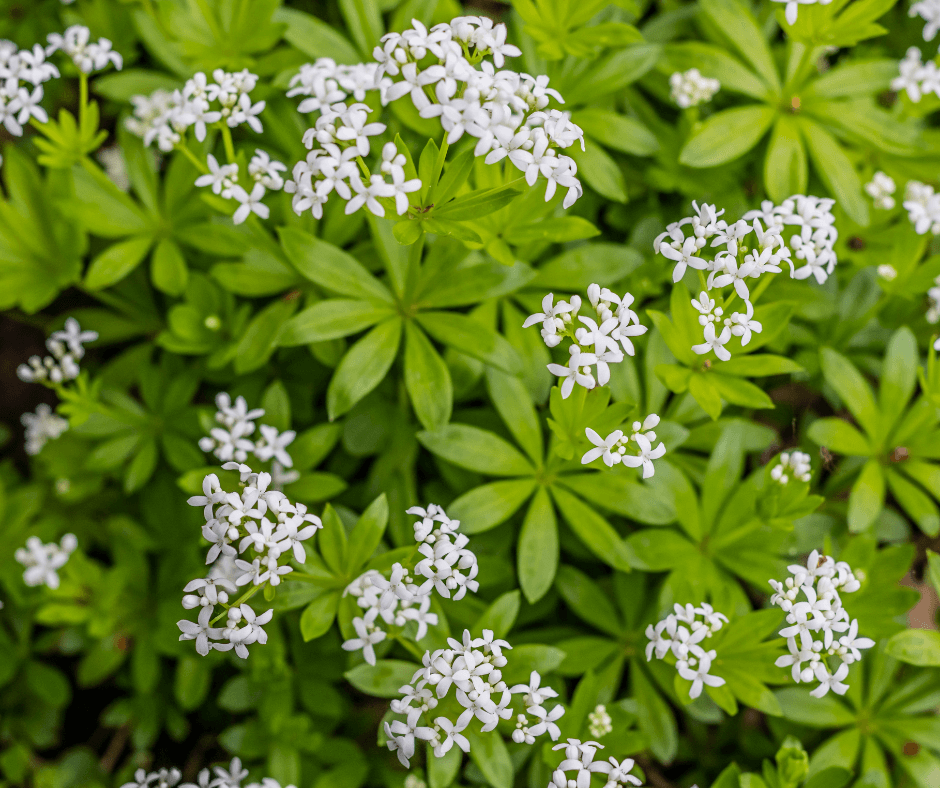
Sweet Woodruff (Galium odoratum, Zones 4-8): Another partial- to full-shade groundcover is European sweet woodruff, which also has the benefit of being an herbal plant used to flavor May wine in Europe. It has clusters of starry white flowers in the spring and whorled, star-shaped leaves; both are fragrant, but it’s the flowers that are used to flavor the wine. (Click here for a May wine recipe.) Sweet woodruff is about 8 inches tall and gently spreads around trees and shrubs. It likes moist, well-drained soil and is deer resistant!
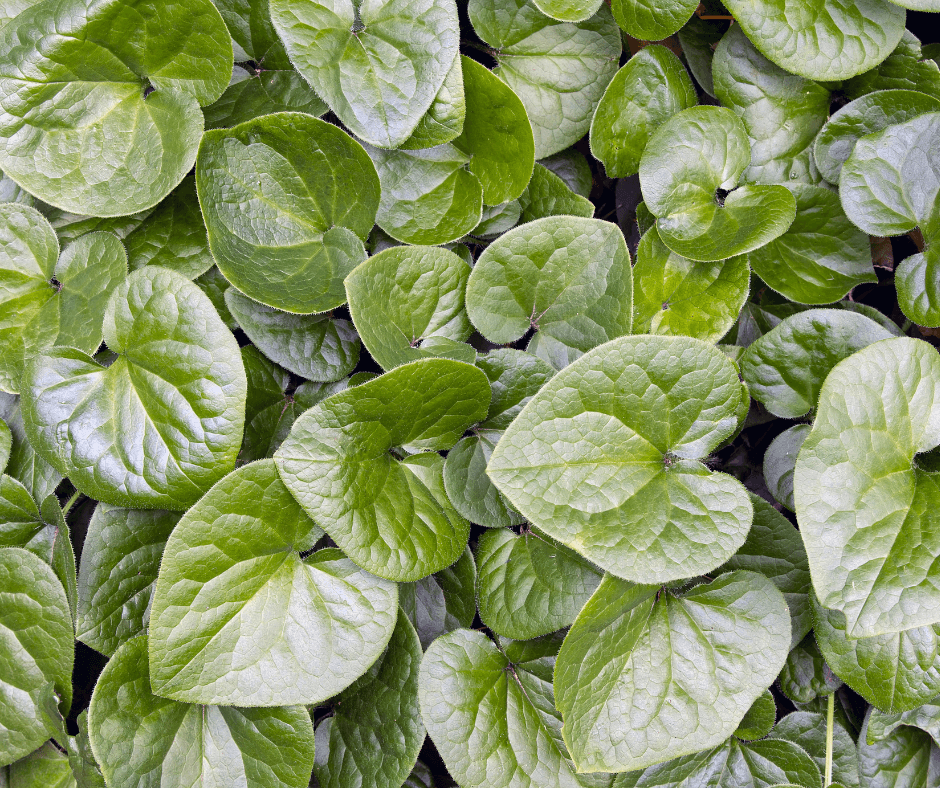
Wild Gingers (Asarum spp., Zones vary): There are many wild gingers with lovely ground-covering foliage and interesting beetle-pollinated spring flowers. The popular native species is Canadian wild ginger (Asarum canadensis, Zones 2-8). Its medium-green, heart-shaped leaves look very pretty on bed edges or to hold shaded garden banks. Chinese wild ginger (Asarum splendens, Zones 6-8) is more ornamental with its pointed, green leaves that have spectacular silver markings. ‘Quick Silver‘ is the best variety. Small, three-petaled, purple flowers appear around the base of the plants in spring. It also does well in full to part shade. Most Asarum reach 6 to 8 inches, like average well-drained soil, and are deer resistant.
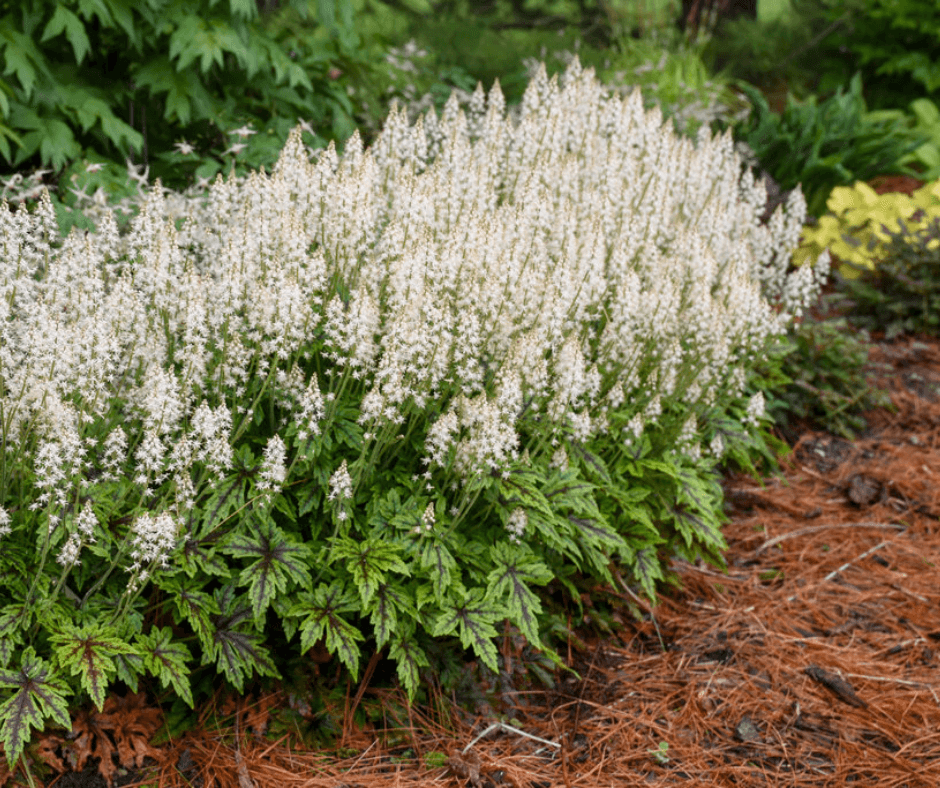
Foamflower (Tiarella spp.): These pretty native perennials have attractive, lobed foliage and spires of foamy flowers that appear in late spring. The flowers may be ivory or pink and attract both bees and butterflies. The pretty clumps of ornate leaves spread over time. Try the new Proven Winners variety ‘Cutting Edge’, which has spectacular green, maple-shaped leaves with red venation. Provide foamflower with full to part shade, and moist, well-drained soil amended with fertile organic matter, such as Black Gold Natural & Organic Garden Compost Blend. In fact, this amendment will create a good soil foundation for all of the shade-loving groundcovers mentioned.
Flowering Groundcovers for Full to Partial Sun
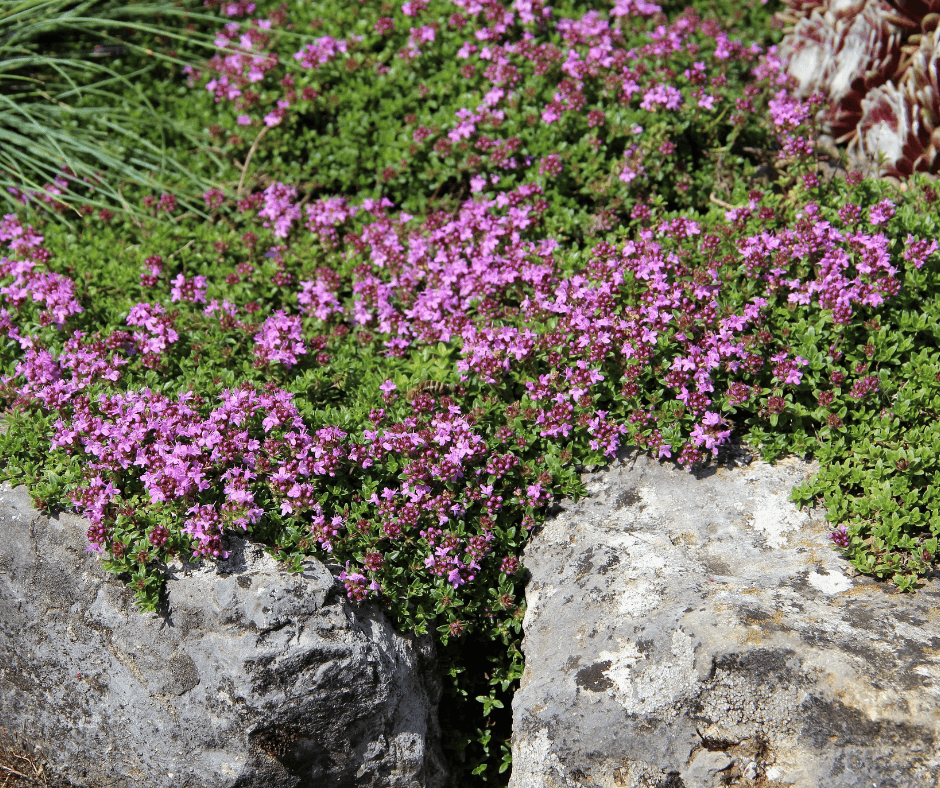
Creeping Speedwell (Veronica prostata, Zones 4-8): Grow this creeping groundcover along a border edge or in a rock garden. The stunning variety, ‘Aztec Gold’, has gold leaves with violet-blue flowers in the early summer. It reaches 6 inches tall, is heat tolerant, and needs moderate moisture. Deer don’t like it but bees and butterflies do.
Creeping Thyme (Thymus serpyllum, Zones 4-8): This easy garden herb is one of my favorites. It does well between paving stones or cascading down rock walls. The fragrant leaves are tiny plants reach 2-inches-high. The spreading mats have little summer flowers of purple, bright pink, or lavender, depending on the variety you buy. Bees love the blooms! Check out ‘Elfin’ with purple flowers, ‘Annie Hall’ with pink flowers, and ‘Silver Posie’, which has white-edged leaves and lavender flowers. The fragrant leaves can be used in cooking. Thyme needs full sun, very well-drained soil, and is drought-tolerant once established. Like most plants in the mint family, it is also deer resistant.
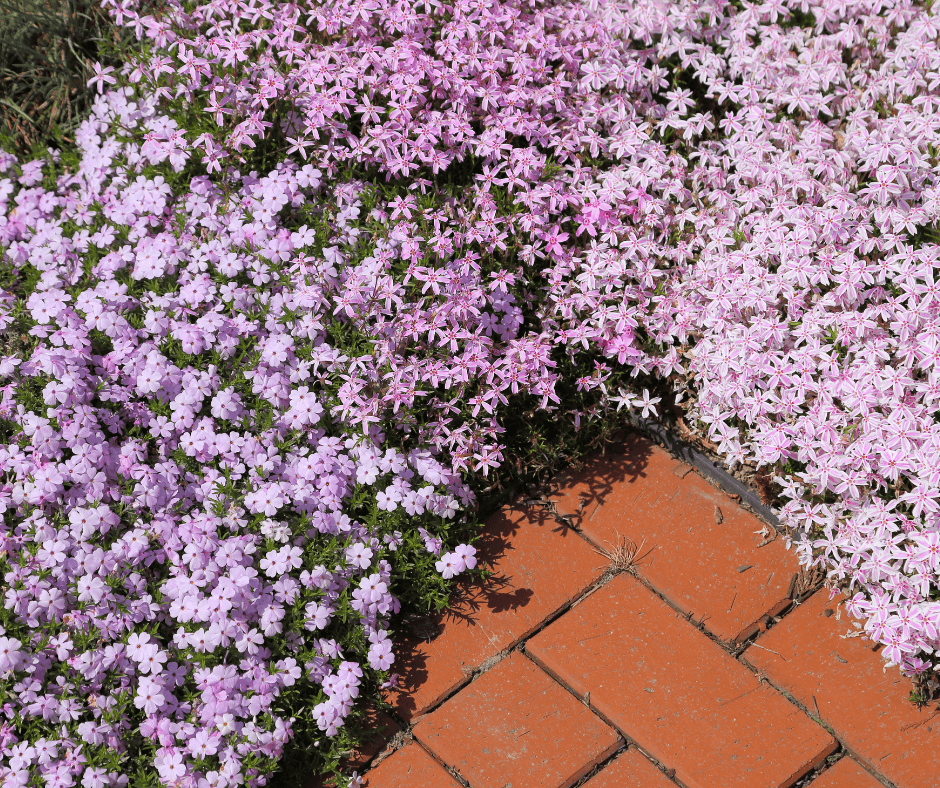
Stonecrop (Sedum spp., Zones vary): For hot, dry, sunny, areas nothing can beat, low-spreading stonecrops. Many have beautiful, succulent leaves, as well as starry flowers that attract bees and butterflies. It is very easy to pull up a piece and replant it to help fill in an area quickly. Some good varieties are the 2-3 inches tall ‘John Creech’ (Sedum spurium ‘John Creech, Zones 3-9) with pink, summer flowers, SunSparkler® Wildfire (Zones 4-9) that has red leaves edged in rose as well as pink flowers in the late-summer, and ‘White Diamond’ (Sedum pachyclados ‘White Diamond’, Zones 5-9) with blue-green rose-shaped leaves and white summer flowers. The broad-spreading ‘Angelina’ (Sedum rupestre ‘Angelina’, Zones 5-9) is a popular variety with gold spiky foliage and yellow summer blooms. Sedums are drought-tolerant once established.
Creeping Phlox (Phlox subulata, Zones 3-9): This has some of the most beautiful flowers of all the groundcovers and blooms for up to 4 weeks in the spring. It averages 5 inches tall and spreads quickly. Plant creeping phlox in open, sunny areas along slopes or retaining walls, in front of shrubs, or in rock gardens where they will get full sun and well-drained soil. Look for the colorful varieties ‘Scarlet Flame’ with red-eyed rose-pink flowers, ‘Emerald Blue’ with pale lilac-blue flowers, and ‘Candy Stripe’, which has pink flowers edged in white. Creeping phlox is deer resistant.
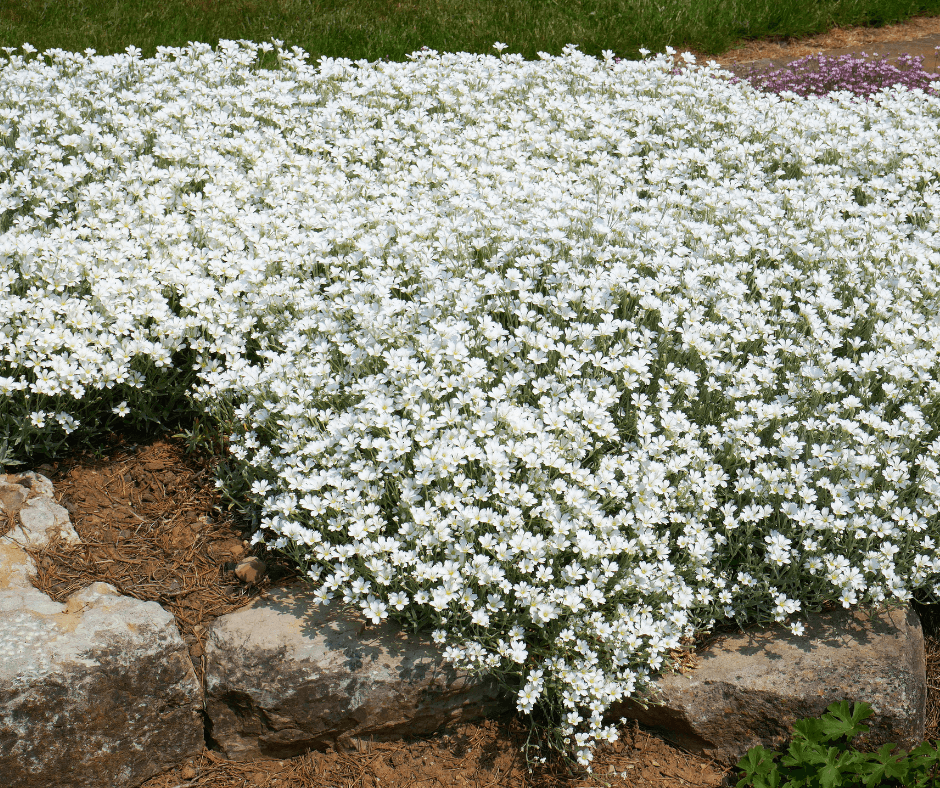
Snow-in-Summer (Cerastium tomentosum, Zones 3-7): gardeners with hot, dry, sunny spots that need a flowering groundcover should grow snow-in-summer. It creates a broad, spreading mat of silver leaves that erupt with cascades of white flowers in the summer. Try the more compact variety, ‘Yo Yo‘. It is beautiful! Site it as you would creeping phlox. Bees and butterflies love the flowers!
These easy groundcovers will help to provide needed in sweeps across your garden. Buy a few to fill in bare areas, and you will be glad you did.
Groundcovers to Avoid
It is important to note that there are some popular groundcovers to avoid because they are invasive and have become an ecological problem in wild areas. These include groundcover periwinkle (Vinca minor and Vinca major), wintercreeper (Euonymus fortunei), Bugleweed (Ajuga reptans), Japanese spurge (Pachysandra procumbens), and worst of all, English Ivy (Hedera helix). English ivy is a tree-killer in zone 7 or warmer (click here to learn more). The evergreen types are truly the worst because they smother native spring ephemerals and other natives along the forest floor. Avoid planting them, if you can.

